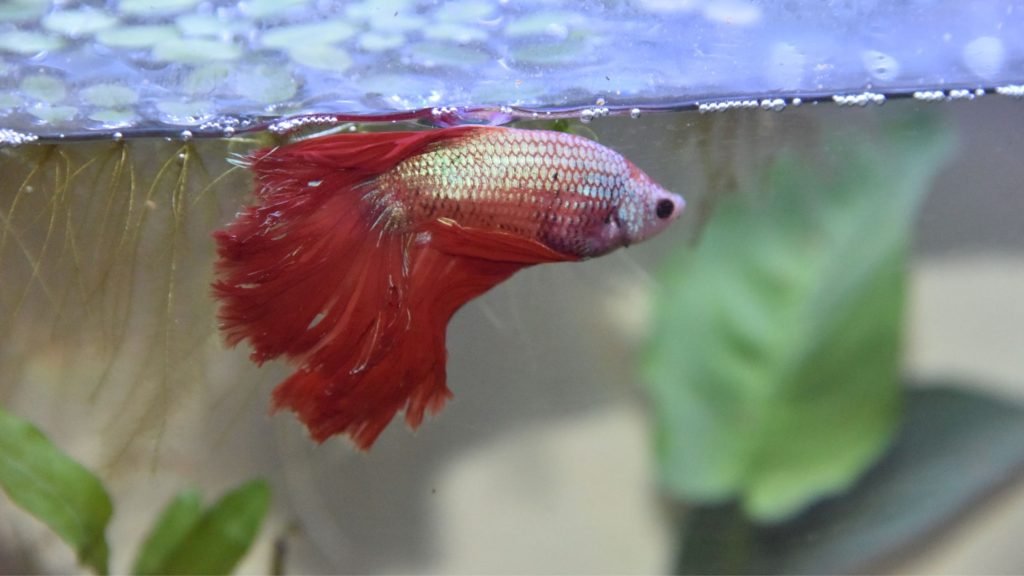If you’re a betta fish owner, you know these beautiful, colorful fish make lovely pets. However, maintaining a clean environment ensures their health and happiness. So, how do you clean a betta fish’s tank properly? In this comprehensive guide, we’ll cover everything you need to know to keep your betta’s home spotless, whether a simple bowl or a larger tank with a filter. Keep reading to learn the ins and outs of betta fish tank cleaning.
Why is it Important to Clean Your Betta Fish's Tank?
Betta fish are known for their hardiness and survival ability in less-than-ideal conditions. However, a clean tank is crucial for their overall health and well-being. An unclean tank can lead to several issues, including:
- Poor water quality: High levels of ammonia and nitrites can lead to stress and disease.
- Bacterial growth: A dirty tank is a breeding ground for harmful bacteria that can cause infections in your betta.
- Algae buildup: Excess algae can deplete oxygen levels, making breathing harder for your betta.
How Often Should You Clean a Betta Fish's Tank?
How often you clean your betta fish’s tank will depend on the size of the tank and whether or not it has a filter. Here are some general guidelines:
- For a small, unfiltered betta bowl (under 2 gallons): Perform a complete water change and clean the bowl at least once a week.
- For a larger, filtered tank (2-5 gallons): Clean the tank and perform a weekly 25-50% water change.
- For tanks larger than 5 gallons: Clean the tank and perform a 25% water change every two weeks.
Steps to Clean a Betta Fish's Tank
Now that you know the importance of a clean tank and how often to clean it, let’s go through the steps to clean a betta fish’s tank properly.
Step 1: Prepare Your Betta’s Temporary Home
Before cleaning the tank, you must prepare a temporary home for your betta fish. You can use a clean, food-safe container filled with dechlorinated water that matches the tank water’s temperature. Gently transfer your betta to the temporary container using a soft net.
Step 2: Remove Decorations and Accessories
Take out any decorations, plants, and accessories from the tank. Rinse them thoroughly with warm water to remove any algae or debris. Avoid using soap or other chemicals, which can harm your betta fish.
Step 3: Clean the Tank
For an unfiltered betta bowl, empty the water and use a soft cloth or sponge to clean the bowl’s interior. For a filtered tank, drain 25-50% of the water (depending on the size) and clean the tank’s interior with a sponge or aquarium-safe scrubber. Make sure to clean the corners, edges, and bottom of the tank to remove any accumulated debris.
Step 4: Clean the Gravel or Substrate
If your betta fish’s tank has gravel or other substrates, it’s also essential to clean it. You can rinse the gravel with warm water in a colander for small, unfiltered bowls. For larger, filtered tanks, use a gravel vacuum to remove debris and uneaten food from the substrate without removing it from the tank.
Step 5: Replace the Water
Refill the tank with dechlorinated water, ensuring it matches the water temperature.
Step 6: Clean or Replace the Filter
If your betta fish’s tank has a filter, cleaning or replacing the filter media is essential. Follow the manufacturer’s instructions for your specific filter model. Squeezing sponge filters in old tank water removes dirt without harming beneficial microorganisms. Replace disposable filter cartridges as recommended by the manufacturer.
Step 7: Reassemble the Tank
Now that you’ve cleaned everything, it’s time to assemble the tank. Place the washed gravel or substrate back into the tank, followed by the rinsed decorations, plants, and accessories. If you have a filter, ensure it’s properly installed and functioning.
Step 8: Acclimate Your Betta
Before reintroducing your betta fish to its clean tank, you must acclimate it to the new water conditions. Slowly add small amounts of the fresh tank water to the container holding your betta. Continue this process for 15-20 minutes to help your betta adjust to the water’s temperature and parameters. Once acclimated, gently scoop your betta out of the container using a soft net and release it into the tank.
Additional Tips for Maintaining a Clean Betta Fish Tank
In addition to regular cleaning, there are several things you can do to keep your betta fish’s tank clean and healthy:
- Invest in a high-quality filter: A good filter will help maintain water quality and reduce the tank’s debris.
- Limit overfeeding: Overfeeding can lead to uneaten food, which decays and creates ammonia. Feed your betta fish the appropriate amount for its size and metabolism.
- Perform regular water tests: Test your tank’s water parameters regularly to ensure optimal conditions for your betta fish. Address any issues promptly to prevent stress and illness.
- Use live plants: Live plants can help absorb excess nutrients, reducing algae growth and maintaining water quality.
How to Clean a Fish Tank Before Use
If you’ve just purchased a new fish tank or are setting up a tank in storage, cleaning it properly before introducing your betta fish is essential. Follow these steps:
- Rinse the tank with warm water, using a clean cloth or sponge to remove dust or debris. Avoid using soap or detergents, as they can leave harmful residue.
- Clean the gravel or substrate thoroughly in a colander under running water.
- Rinse any decorations, plants, and accessories to remove dust or debris.
- Fill the tank with dechlorinated water, install the filter and heater, and let it run for at least 24 hours to ensure everything functions correctly and establish a stable water temperature.
How to Get Clear Water in a Fish Tank
Cloudy or murky water in a fish tank can be unsightly and harmful to your betta fish. Here are some tips for maintaining clear water in your betta fish’s tank:
- Use a proper filtration system: A good filter will help remove debris and excess nutrients from the water, keeping it clear.
- Perform regular water changes: Regular water changes will help maintain water quality and prevent the buildup of waste and debris.
- Use water clarifiers: If you’re struggling with cloudy water, water clarifiers can help by binding small particles together, making it easier for your filter to remove them.
- Maintaining a balanced aquarium: A well-balanced tank with the appropriate number of fish and plants and a stable biological filter will help keep the water clear and healthy.
How to Clean a Betta Fish Bowl Without a Filter
If you’re keeping your betta fish in a bowl without a filter, you’ll need extra care to maintain a clean environment. Here are some tips for cleaning a betta fish bowl without a filter:
- Perform frequent water changes: Since there is no filter to help maintain water quality, it’s essential to perform regular water changes. Aim for a 50% water change every few days to keep the water clean and fresh.
- Use a turkey baster or small siphon to remove debris: Gently siphon the debris from the bottom of the bowl using a turkey baster or small siphon. This will help remove uneaten food and waste without disturbing the substrate.
- Clean the bowl regularly: Remove your betta fish at least once a week and place it in a temporary container. Empty the bowl and use a soft cloth or sponge to clean the interior. Rinse the bowl thoroughly with warm water before refilling it with dechlorinated water.
- Keep live plants: Adding live plants to the bowl can help absorb excess nutrients and maintain water quality.
Conclusion
Cleaning your betta fish’s tank is essential to maintaining a healthy and happy environment for your pet. Following the steps outlined in this guide and performing regular maintenance will ensure that your betta fish thrives in a clean, safe, and beautiful home. Remember to adjust your cleaning routine based on the size of your tank and whether or not it has a filter. With proper care and attention, your betta fish will reward you with its vibrant colors and fascinating behavior for years.

